
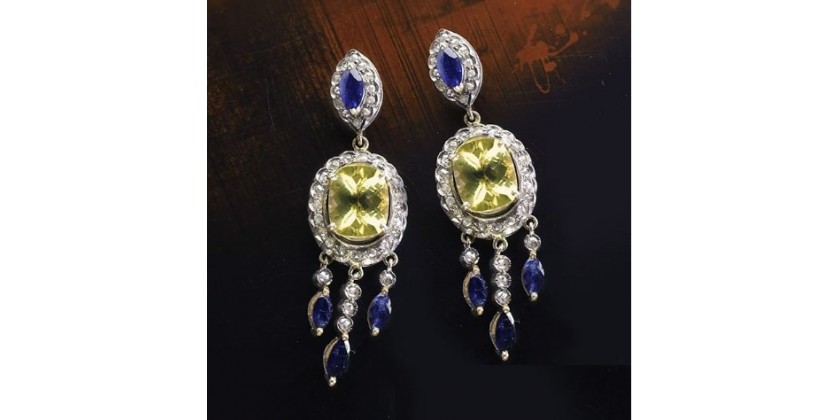
The Complete Guide to Vintage Bracelet Styles
Lady and hands. Women have worn decorative bracelets from Cleopatra to Marilyn Monroe to Michelle Obama throughout history. The history of the bracelet dates back to the ancient Egyptians in 5000 BC, although archaeologists found a bracelet
Turkey was founded around 7500 BC. Investigators were amazed at the details.
and the experience found in the 9,500-year-old bracelet.
The word bracelets come from the Greek "brachile", which means "by the arm".
Over the years, the bracelets have been made from a variety of materials, including leather, fabric, plastic, and metal. They are generally adorned with jewelry,
Stones, shells, metal, crystals, or pearls, to name a few. The bracelets are available in several
different styles. Our guide below contains everything you need to know about the different types of
Antique style bracelets.
For More Products Visit Our Website https://www.antiqa.in/14-VictorianandVintagebracelets
1) CUFF BRACELET
A bracelet is generally a wide, stiff bracelet that does not have a clasp, but only closes
It rests on the wrist with a space inside the wrist. The bangle bracelets are
Generally worn on the wrist rather than higher on the arm. At first
19th-century goldsmiths Zuni and Navajo made headlines for tourists traveling west from Chicago to Los Angeles on the Atchison, Topeka, and Santa Fe railroads.
The train makes several stops in the southwestern United States. The wrists were overpowered.

through large turquoise pieces, while others built small stones as reflections or in the form of a grid. William Spratling Company in Taxco, Mexico, were goldsmiths who also designed. The early fists of The 1930s and 1940s were often covered in amethysts, while the later Taxco fists of the 1950s and 1960s contained ordinary stones like obsidian and quartz. Modern postwar New York jewelers like Frank Rebajes and Paul Lobel preferred cuff bracelets. The same motivation probably applies to Scandinavian countries.
Jewelry designer from Jacob Hull to Georg Jensen. Bracelets were also in fashion.
Contemporary American designers like David Yurman and renowned jewelers like Tiffany and Van Cleef and Arpels, whose gold bracelets were worn by Jacqueline Kennedy Onassis.
2) CHARMING BRACELET
Simply put, a charm bracelet is a delicate jewel for the adorned wrist. with small "charms" or balls. However, it is not known exactly when this tradition began
Small bracelets made of ropes decorated with shells were found on the African continent is over 75,000 years ago. In Europe bracelets from 30,000 years ago. At the height of the last ice age, small ivory spells were found
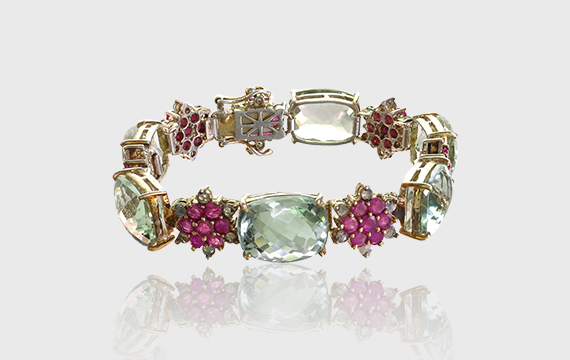
Mammoths People may have earned these charm bracelets for aesthetic or emotional reasons.
Similar reasons for today. Or it could have been a symbol of loyalty or faith. Little charm bracelets can also be used as a spell to bring good luck or ward off evil spirits.
The tradition of modern charm bracelets, with a white gold link bracelet or
Silver is of Victorian origin. Queen Victoria had several charm bracelets. This was a trend in the middle and upper classes in America and Europe in the late 19th century.
At the beginning of the 20th century, charm bracelets became fashionable in all areas.
of society. During World War I and II, some soldiers returned spells and bullets
Mothers, women, and daughters of the countries in which they were stationed as souvenirs. Since
Since the 1950s, Hollywood actresses wore charm bracelets on display. These started a booming popularity trend that continues to this day.
3) BOOK CHAIN BRACELETS
It is a metal chain bracelet with folded rectangular metal links. Each link looks like a little book. This type of jewelry originated in the Victorian era. where the book chain bracelets were often engraved and were particularly popular during the Renaissance of Victorian jewelry, the second half of the Art Deco period in the 1930s and 1940s.
 4) GATE BRACELETS
4) GATE BRACELETS
Door bracelets became popular during the Victorian era, because of their precision
The origins are difficult to determine. The terms "door bracelets" refers to the unusual chain style
of nested grid panels. These panels would look like doors and fences of English castles and estates. The style of the chain that carries the bracelet.
FOR BUY VINTAGE BRACELETS : https://www.antiqa.in
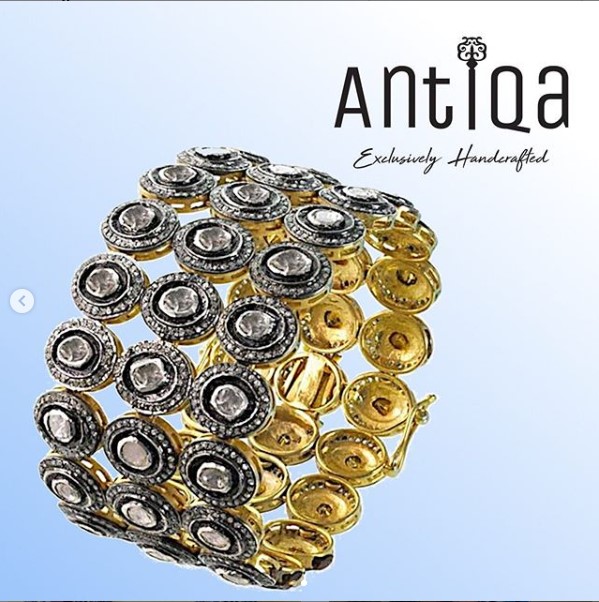
It resembles Belcher links as well as the closest link chains. The main difference from the other bracelet is the great heart-shaped charm. The charm has a lock and a key
This is the clasp of the bracelet. It is a perfect representation of Victorian ideas of chastity and romance. They were generally in 9, 10, or 14 karat gold. Silver was not particularly in vogue in the Victorian era, and platinum had not yet been made.
5) Clamper Bracelet
This type of bracelet is attached to the wrist with a spring clasp. The origin
This type of bracelet dates from the 1940s. Vintage clip bracelets
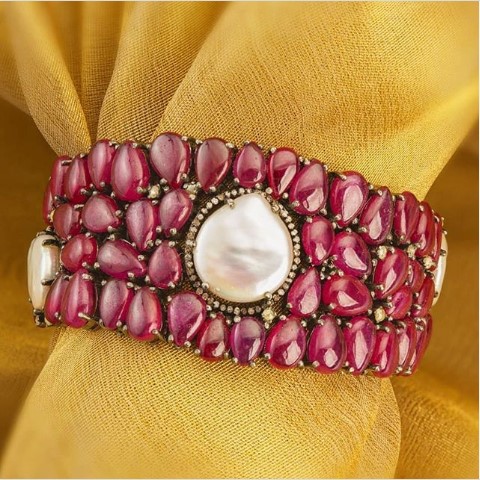
they were made from a wide range of materials including diamonds, silver, gold, metal,
Rhinestones or plastic. They were often part of a set with earrings and/or a brooch.
In the 1960s, plastic tension neon bracelets were in vogue. Clamper bracelets remain popular with collectors to this day, and those that come with matching brooches or earrings are the most popular.
6) TWISTED BRACELET
A braided bracelet contains several rows of pearls or pearls.
with a clasp The name "twist" in French means "twist" or "cable".
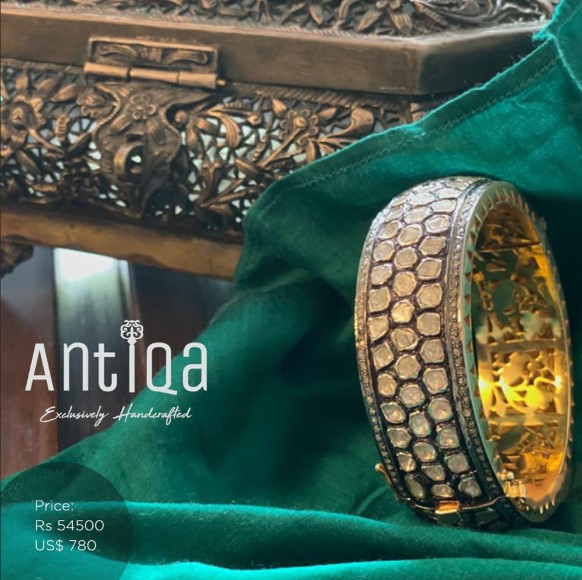
It is an old style of bracelet: examples of braided bracelets were found in Ancient Egypt.
7) CHAIN LINK BRACELET
The mesh bracelet is exactly what it seems. A bracelet chain. Chains can be a variety of different types of metal chains. They can be big and strong or thin and sensitive.
8) LINE OR TENNIS BRACELET
Inline bracelet refers to a type of thin and flexible bracelet that spans a row of rectangular or square links placed on a single line. The stones are identical stones or combinations of different types of stone. It is very popular in 1920 when the style reflected the regular patterns and ethics of
the geometric Art Deco design period. They were often worn with flapper dresses. The bracelet on the line experienced a renaissance in the 1980s.



















